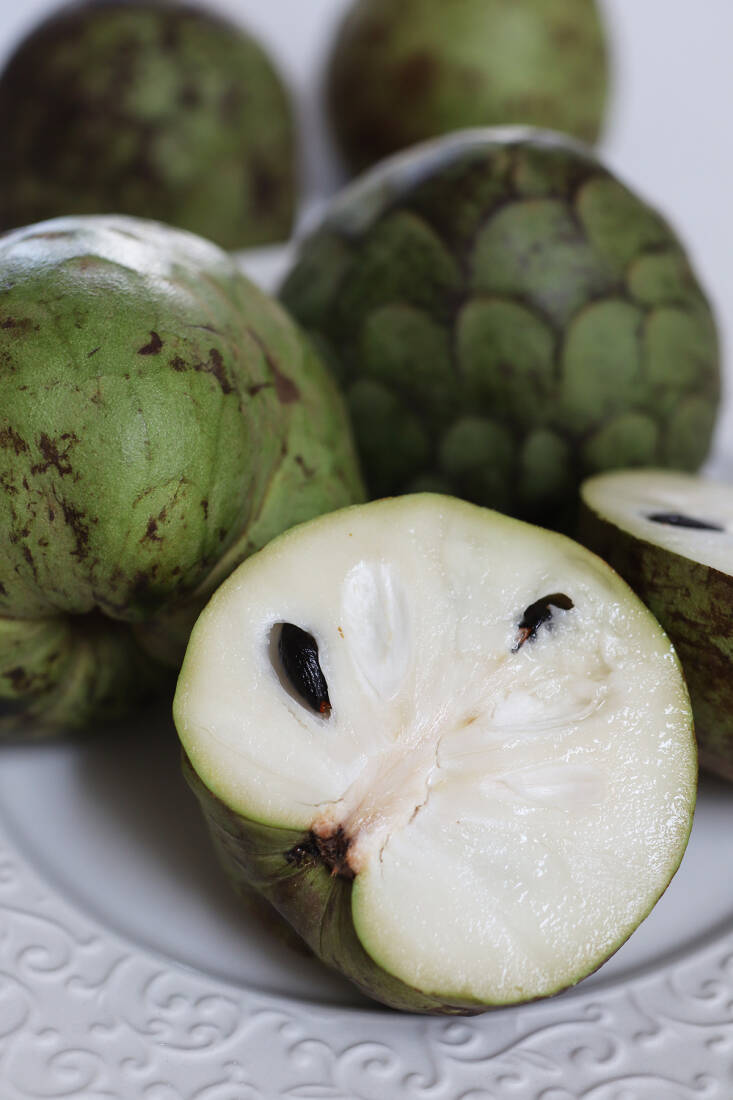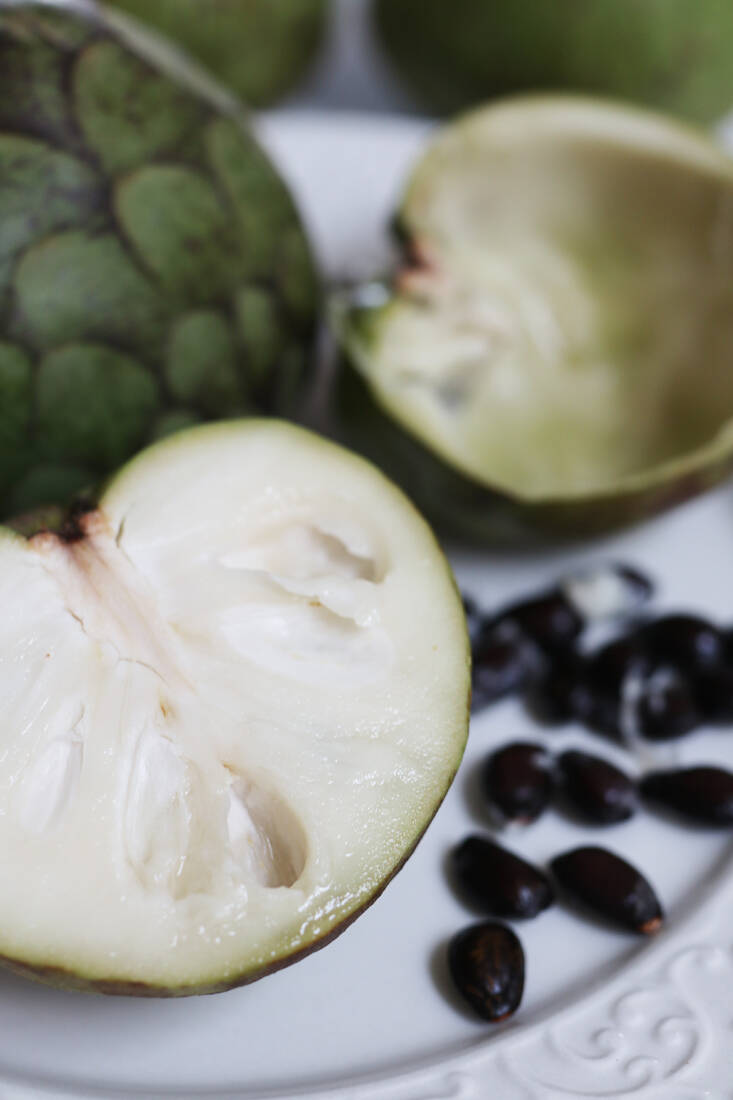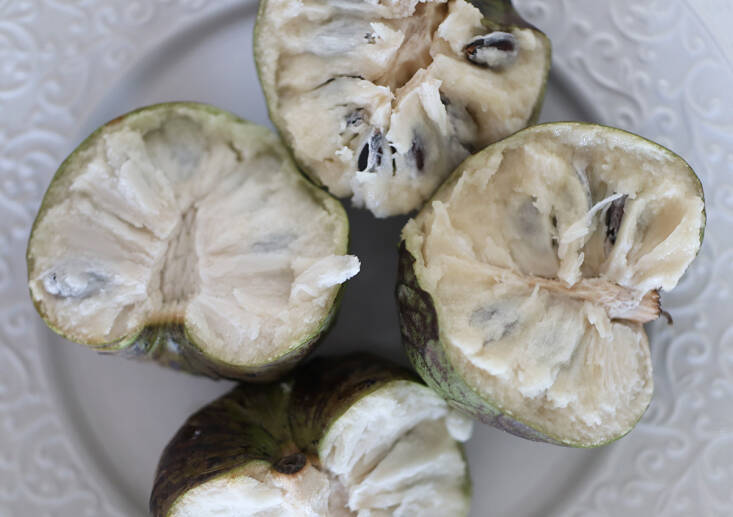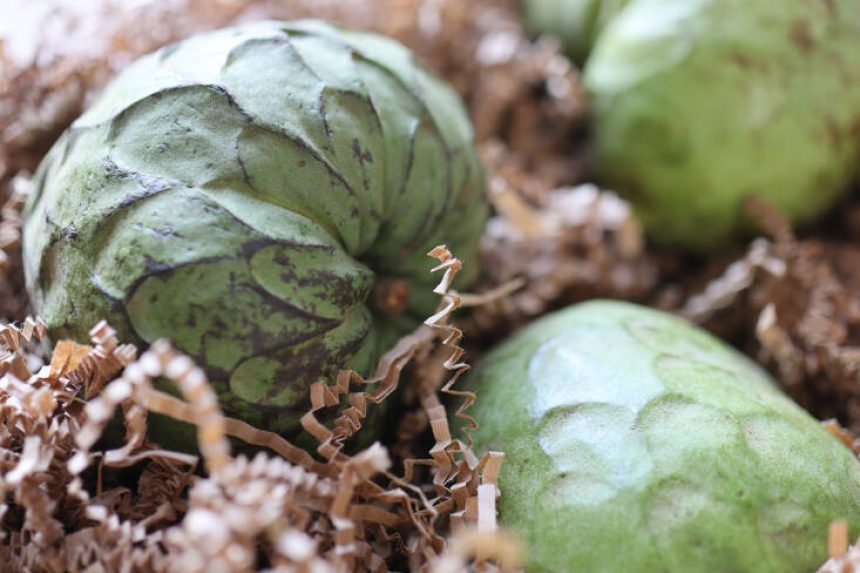On the East Coast, winter gardens and growing spaces are asleep, locked in cold, and bleakly grey, with bare-branched brown relief. Botanical life has been halted by frost. The only local fare around is the succession of apples and pears that come to market, brought in and out of cold storage since fall. Despite the cheerless outlook, these early months of the year bring a subtropical fruit to ripeness—just not on this coast: It is cherimoya season in California. Fattening among their large, lush leaves, they are available countrywide by the boxful at the click of a mouse. Every February I escape online to order a boxful from Rincon Tropics in Carpinteria (where the first cherimoya seeds were planted in 1871), and about a week later it is at our doorstep.
In frigid February, the cherimoyas are a brief, delicious dive into what seasons mean in this climactically diverse country; they are local, not to frozen New York, obviously, but to that other shore, and another way of late-winter life and harvest.
Photography by Marie Viljoen.
Probing carefully in their boxed nest of shredded brown paper, my fingers discover the heavy fruit and lift them out. The cherimoyas resemble—like a Rorschach test—sleeping armadillos, curled tight; the squat hearts of cartoon alligators; green grenades; or algal clay orbs marked by the careful thumbprints of their maker. They are sometimes called ice cream fruit—protected by their leathery shell, their white flesh is creamily sweet, juicy, and fragrant.
I do see cherimoyas at local supermarkets, but fitfully. Their prices are in the $7.99 to $12.99 range per pound, and it’s hard to tell how they have been treated. They ripen erratically and sometimes unevenly, if they have been refrigerated for a long time. (At this time of year their soursop cousins appear at Caribbean markets, and I have made snowy treks across Prospect Park to the Little Caribbean neighborhood of Brooklyn to find those at Labay Market, whose owner flies his fruit in from his farm in Grenada. They are enormous, and good.)

The trove from Rincon Tropics is a gift to myself. These cherimoyas are grown by the Brown family—Tony Brown was the first to cultivate them commercially in the United States, about 50 years ago, and they are shipped to customers by his son, Nick Brown, who pivoted from farmers’ markets to mail-order during the first months of the COVID pandemic. They ripen (like avocados) a few days after arrival and are in season for another two to three months.
A large box (four to five hefty fruit) of cherimoyas from Rincon Tropics is $50.

Cherimoyas ripen at room temperature, and are sweet when the stem-end yields to the pressure of a gentle thumb. At that point they can be chilled for a few days if you can’t eat them at once. After eating the first ripe fruit straight up, with a spoon, I settle into the task of removing the seeds from the rest, to make an annual, memorably good cherimoya granita.
Their flavor varies from cultivar to cultivar. Generally, ripe cherimoya are intensely sweet and so juicy that moisture pools in the shell as you scoop out the soft flesh. The sweetness is made more interesting by some lemon-sherbert edges and a delicately tropical funk, near the pear-grained perimeter.

Botanically, cherimoyas are Annona cherimola, and are considered native to Andean South America, although it is possible that their origins are Mesoamerican. Time and evolving science will tell. Regardless, cherimoyas were eaten and cultivated by the Incas, and depicted on pottery that predates them. The fruit belong to the same Annonoceae family as custard apples, soursops, and sweet sops (also called sugar apples)—all sharing dimpled or knobbly green skin, with white flesh and big seeds; as well as to the native Eastern North American pawpaw, whose smooth skin hides apricot flesh and the same glossy seeds.








